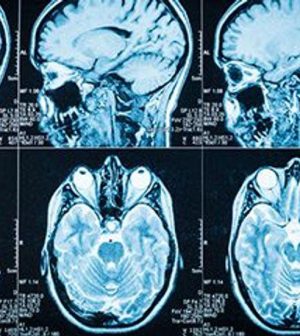- Navigating Your Midlife Crisis: Embracing New Possibilities
- City Raccoons Showing Signs of Domestication
- Mapping the Exposome: Science Broadens Focus to Environmental Disease Triggers
- One Week Less on Social Media Linked to Better Mental Health
- Your Brain Changes in Stages as You Age, Study Finds
- Some Suicide Victims Show No Typical Warning Signs, Study Finds
- ByHeart Formula Faces Lawsuits After Babies Sickened With Botulism
- Switch to Vegan Diet Could Cut Your Greenhouse Gas Emissions in Half
- Regular Bedtime Does Wonders for Blood Pressure
- Dining Alone Could Mean Worse Nutrition for Seniors
Iron Gathers in Brain After Concussions

Folks who’ve suffered a concussion and then develop headaches show iron accumulation in their brains, new research discovers.
Excess brain iron stores are a hallmark of damage, noted a team led by Simona Nikolova, of the Mayo Clinic in Phoenix. The team is slated to present the results in April at the annual meeting of the American Academy of Neurology (AAN).
“Previous studies have shown that iron accumulation can affect how areas of the brain interact with each other,” Nikolova said in an AAN news release. “This research may help us better understand how the brain responds and recovers from concussion.”
The new research involved 60 people who all developed headaches after a concussion. The concussions were caused by falling (45%), car accidents (30%) or fighting (12%). For just under half of the people, this was their first concussion.
Brain scans from the 60 concussion patients were compared to those taken from 60 people with no history of concussions or post-traumatic headache.
The scans showed that, compared to folks who’d never been concussed, those with a history of concussion had higher levels of iron in various brain areas. Iron levels seemed to mount as time after the concussion went on.
“These results suggest that iron accumulation in the brain can be used as a biomarker for concussion and post-traumatic headache, which could potentially help us understand the underlying processes that occur with these conditions,” Nikolova said.
Because these findings are to be presented at a medical meeting, they should be considered preliminary until published in a peer-reviewed journal.
More information
Find out more about concussions at the U.S. Centers for Disease Control and Prevention.
SOURCE: American Academy of Neurology, news release, March 5, 2024
Source: HealthDay
Copyright © 2025 HealthDay. All rights reserved.










